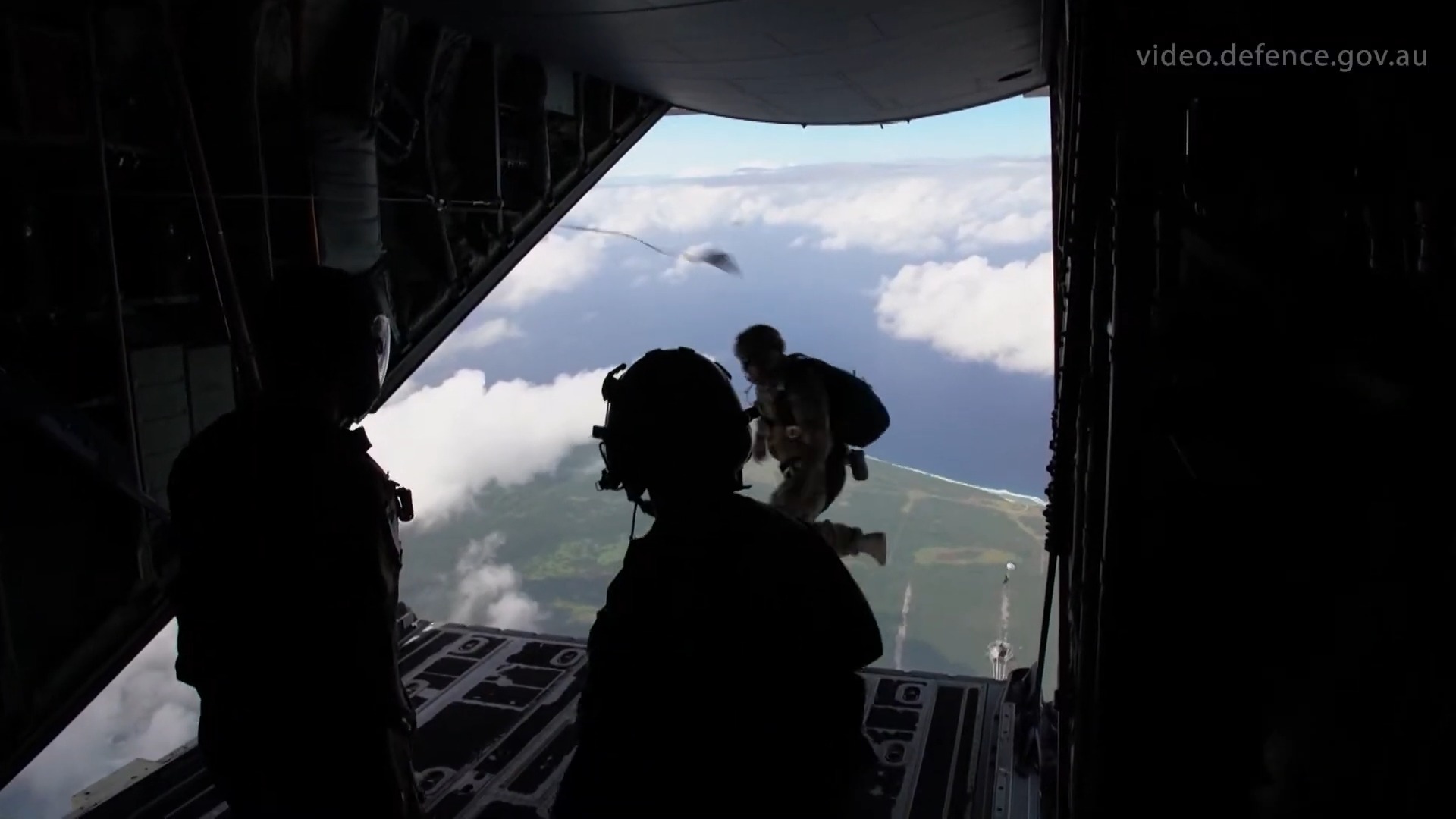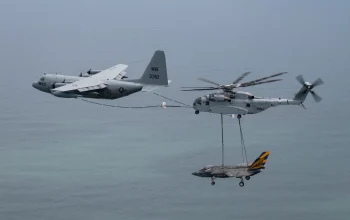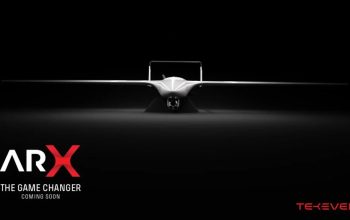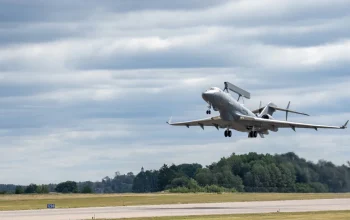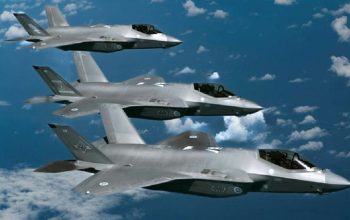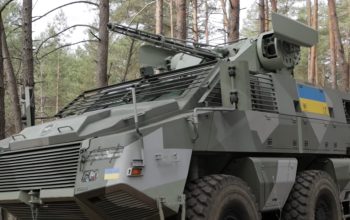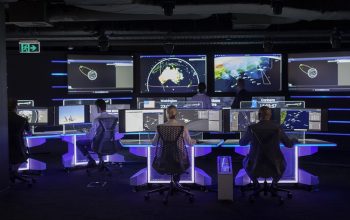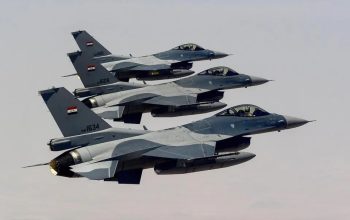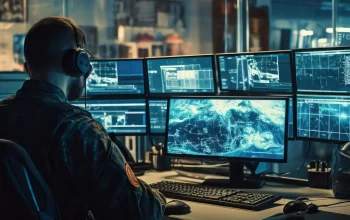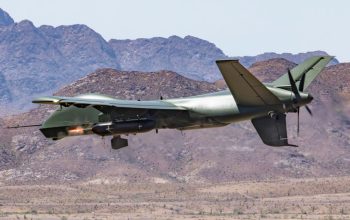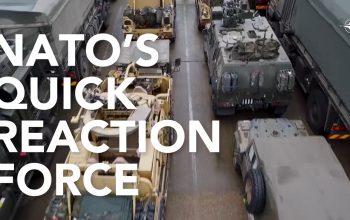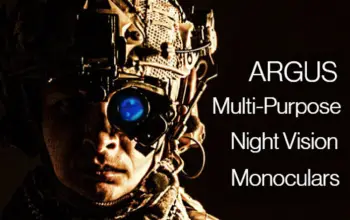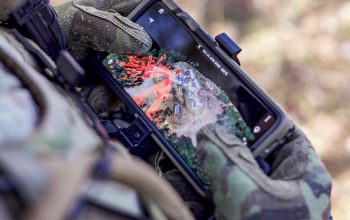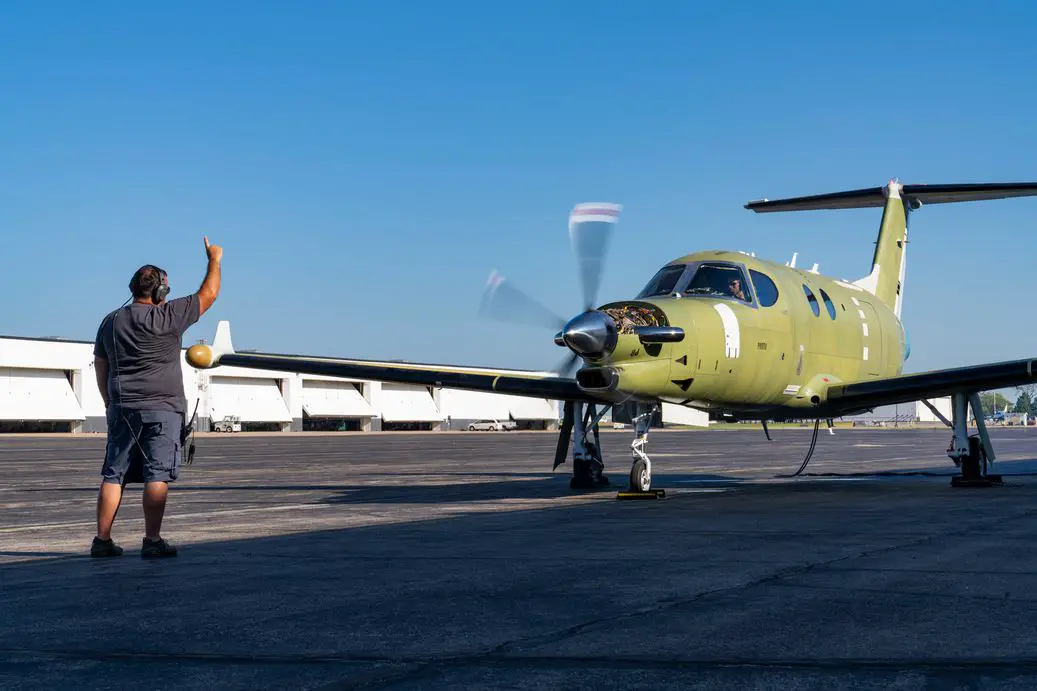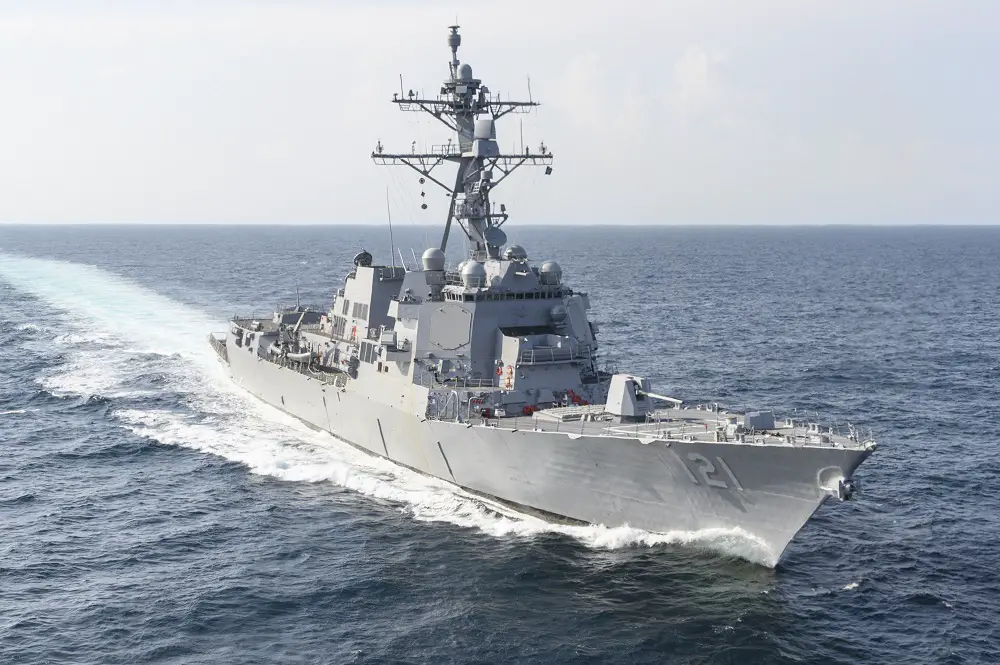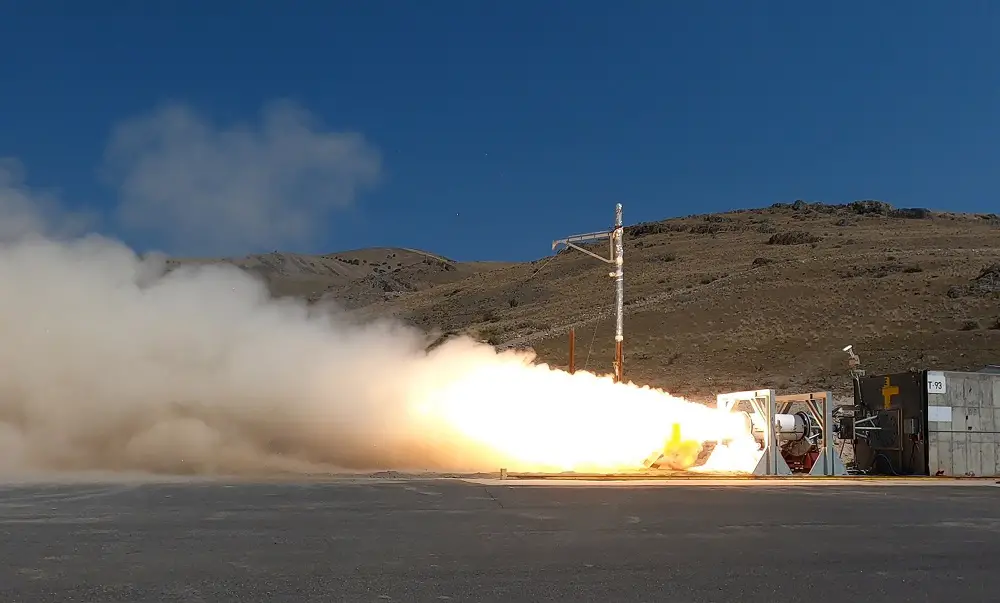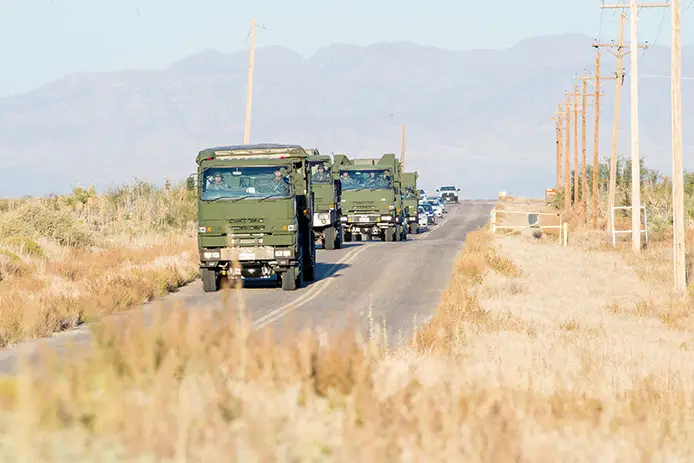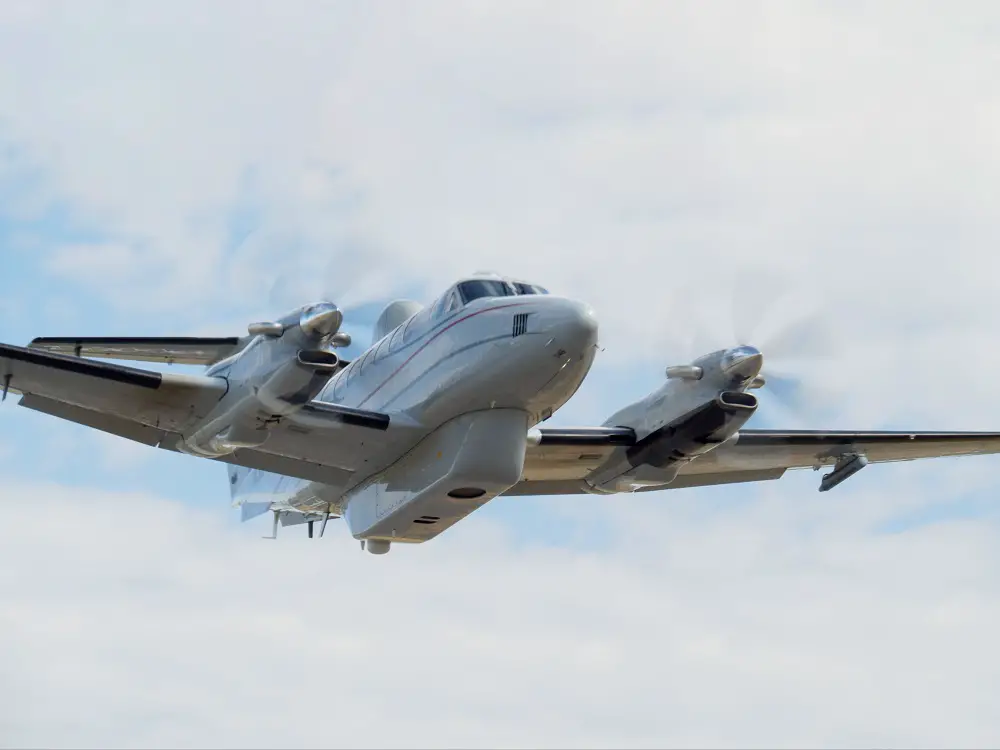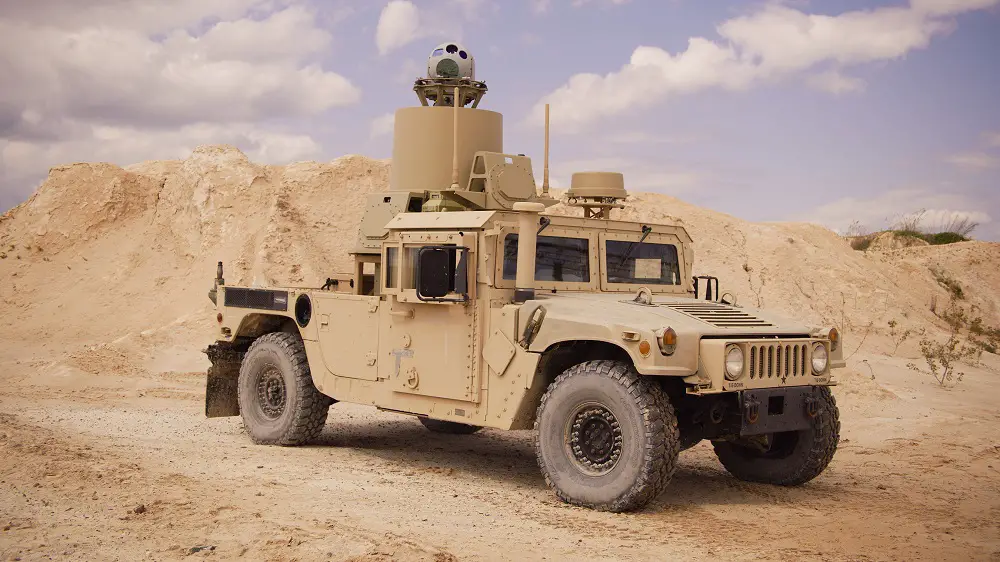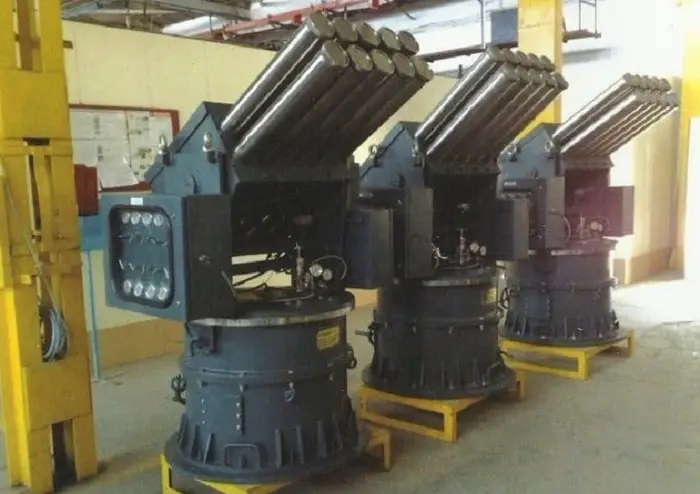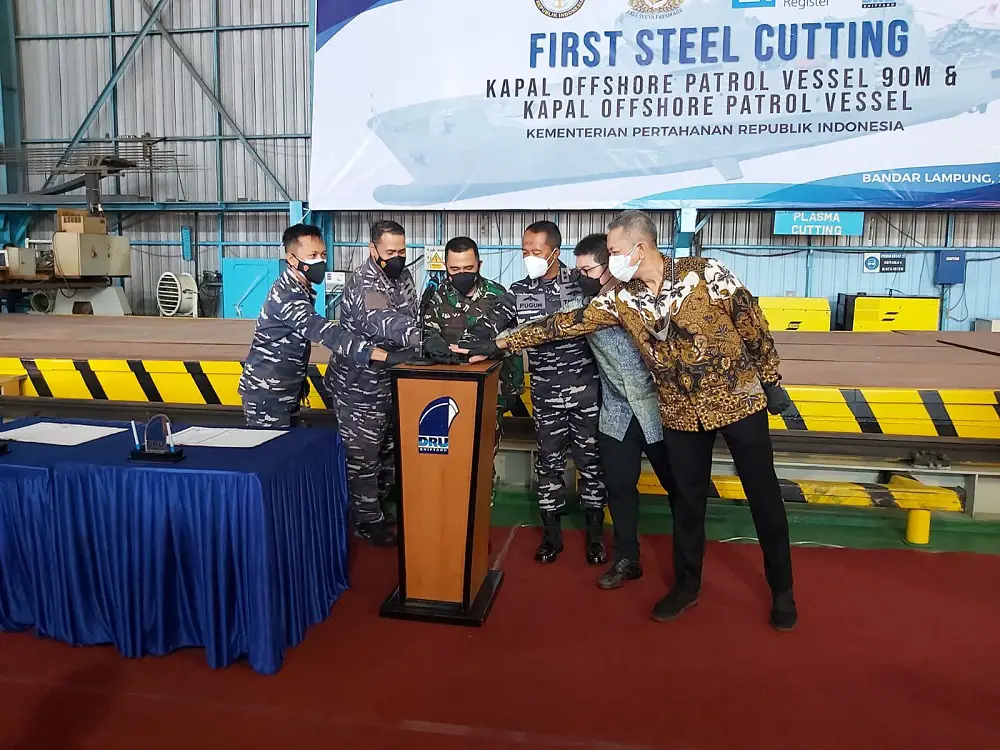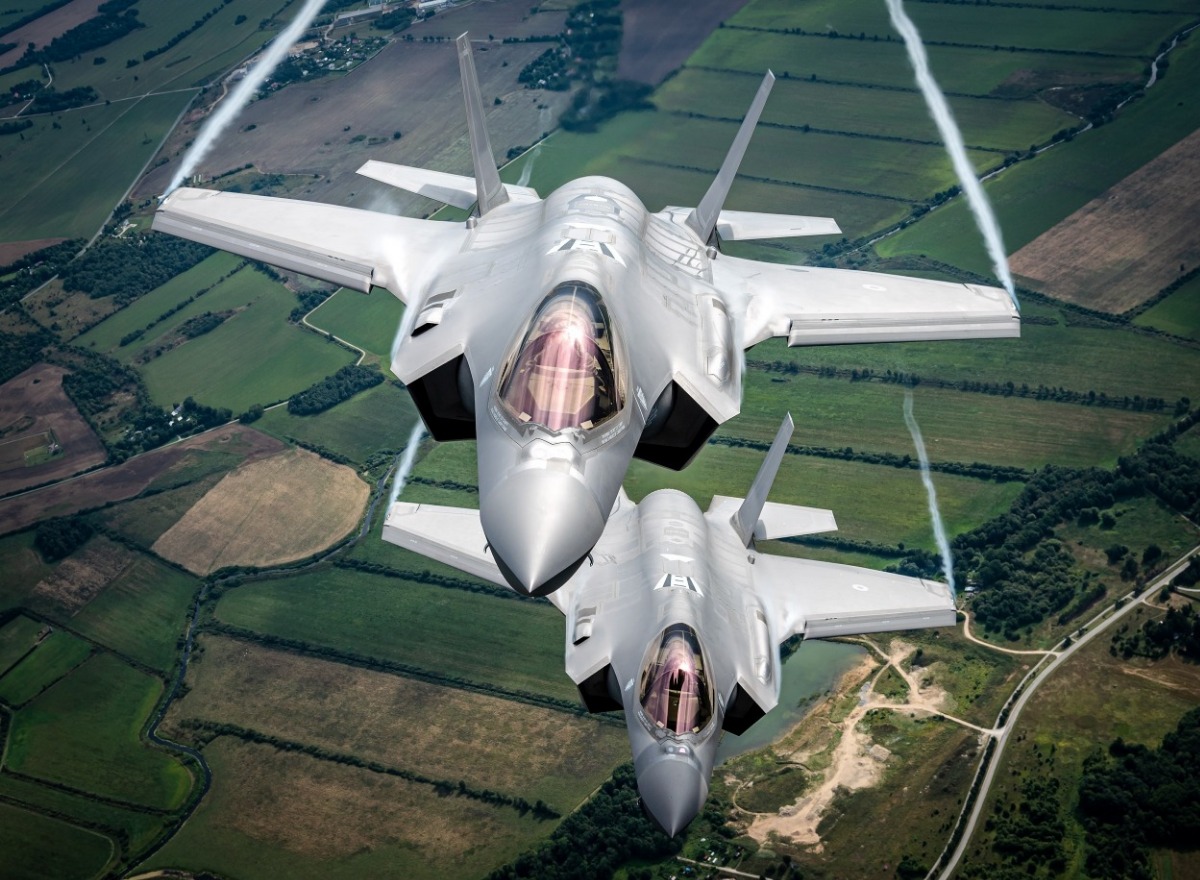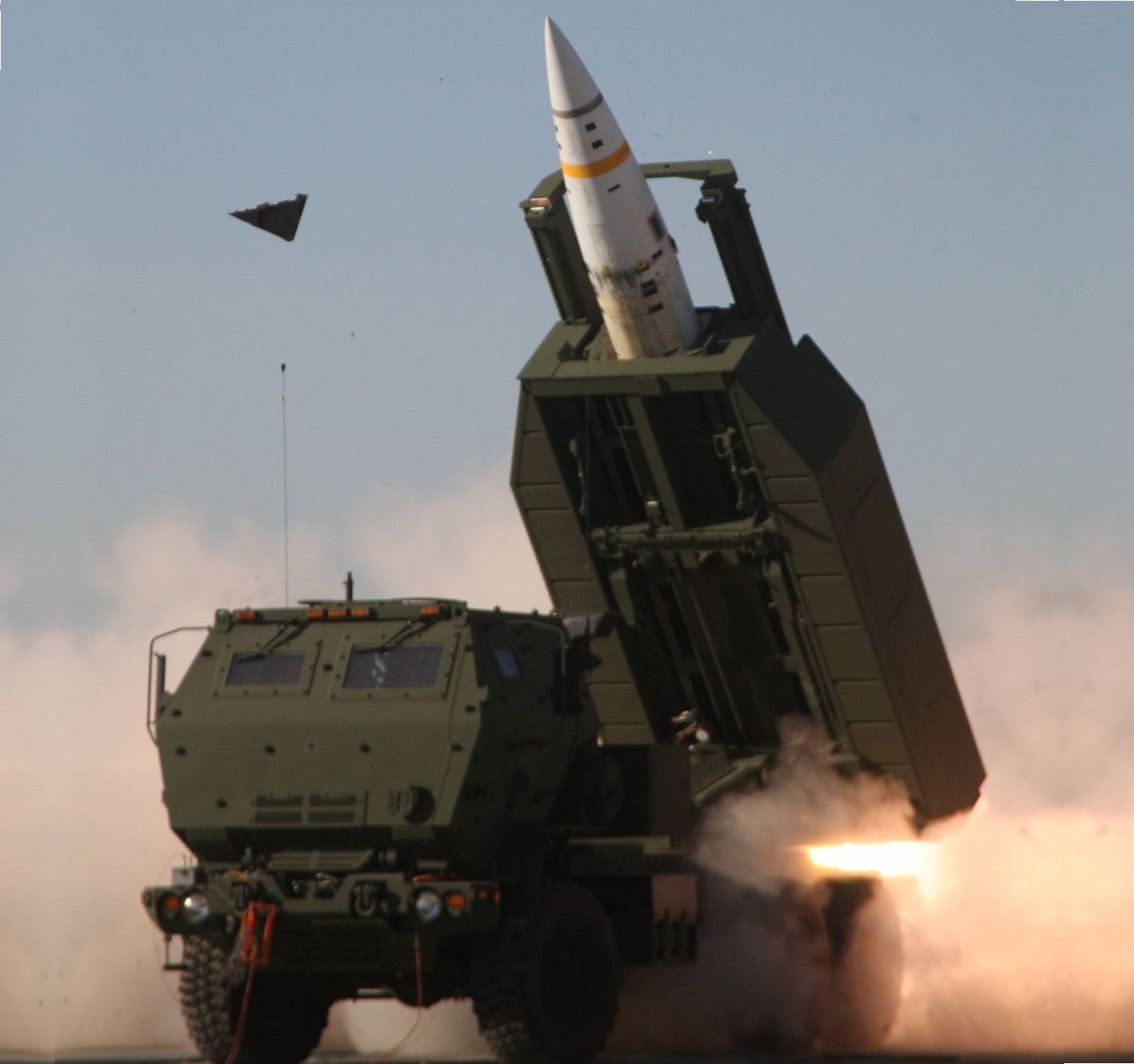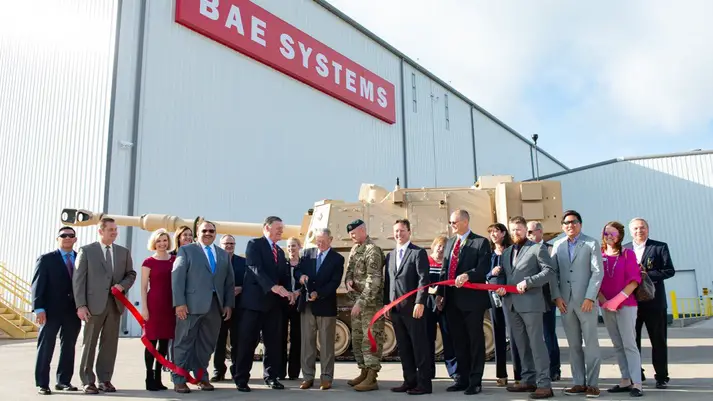Parachuting at 7000 feet above the Drop Zone from the USAF C-130, the Combat Control Team (CCT) are the initial response into “Bykira” to asses Baker Airfield in support of the Humanitarian Assistance and Disaster Relief (HADR) trilateral training for Cope North.
No. 4 Squadron is composed of Combat Controllers responsible for reconnaissance, joint terminal attack control and advanced force operations, either as part of a larger advanced force supporting SOCOMD, or independently.
They are often the first point of contact when deploying operational support during HADR and air combat missions.
CC Team Leader, Sergeant M, said it was mission critical to get the team on the ground to assess the situation in real time in preparation for the main insertion.
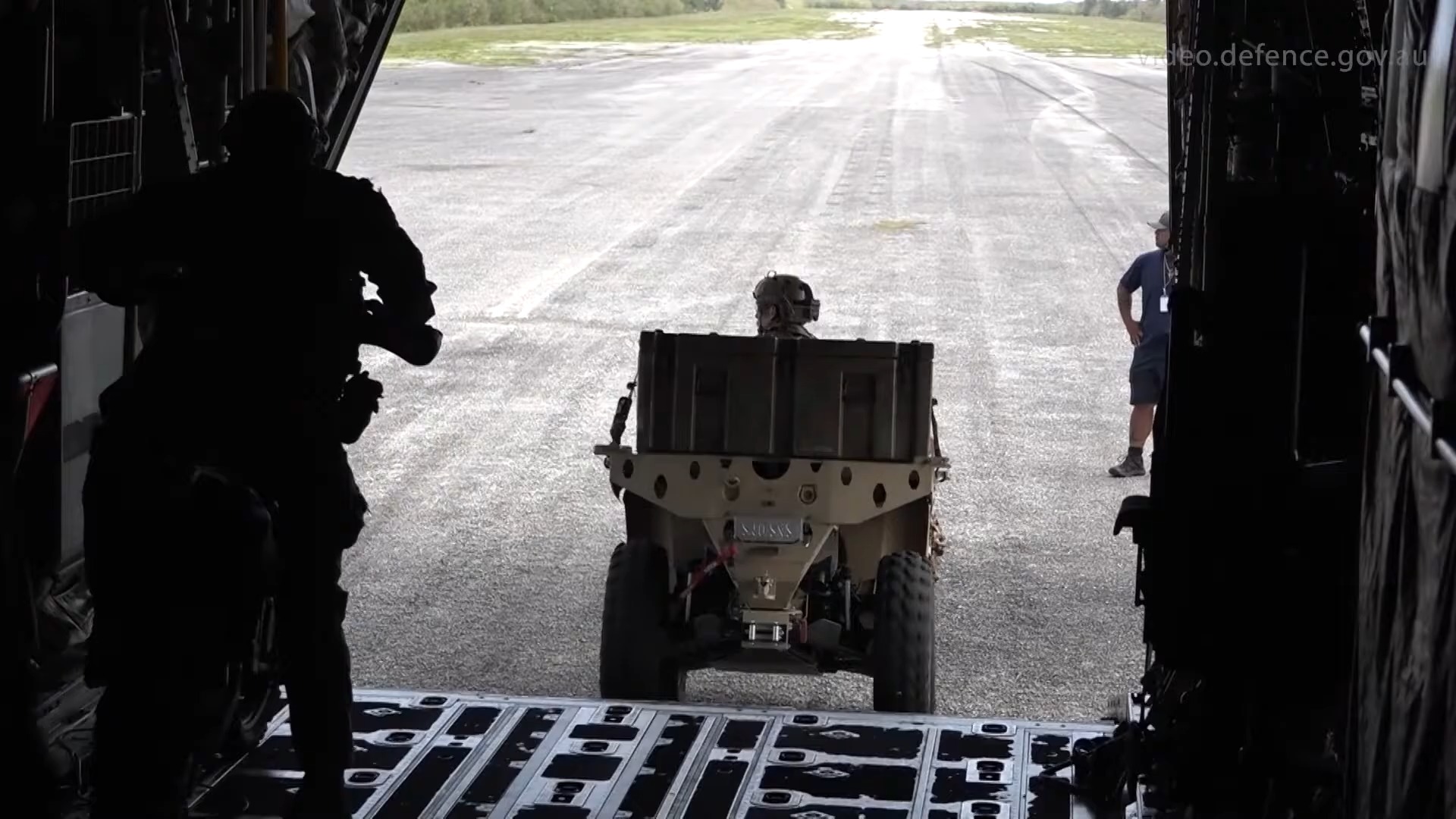
“Once we landed within the Drop Zone, the team conducted an initial runway assessment to ensure it was safe for the C-130 to land. We then established communications with the Multinational Task Force HQ in Guam,” Sergeant M said.
“We also found a suitable Mission Support Site and sent back the relevant dimensions to the Contingency Response Squadron (CRS) to aid their planning.
“We observed the airfield service roads and determined they were all operational, except one. This was important information for local authorities and military personnel during the planning phase.
“Finally, the team conducted a detailed survey of the main runway and found it to be conducive for sustained C-130 operations. This information was passed to the airfield engineers to support their planning.
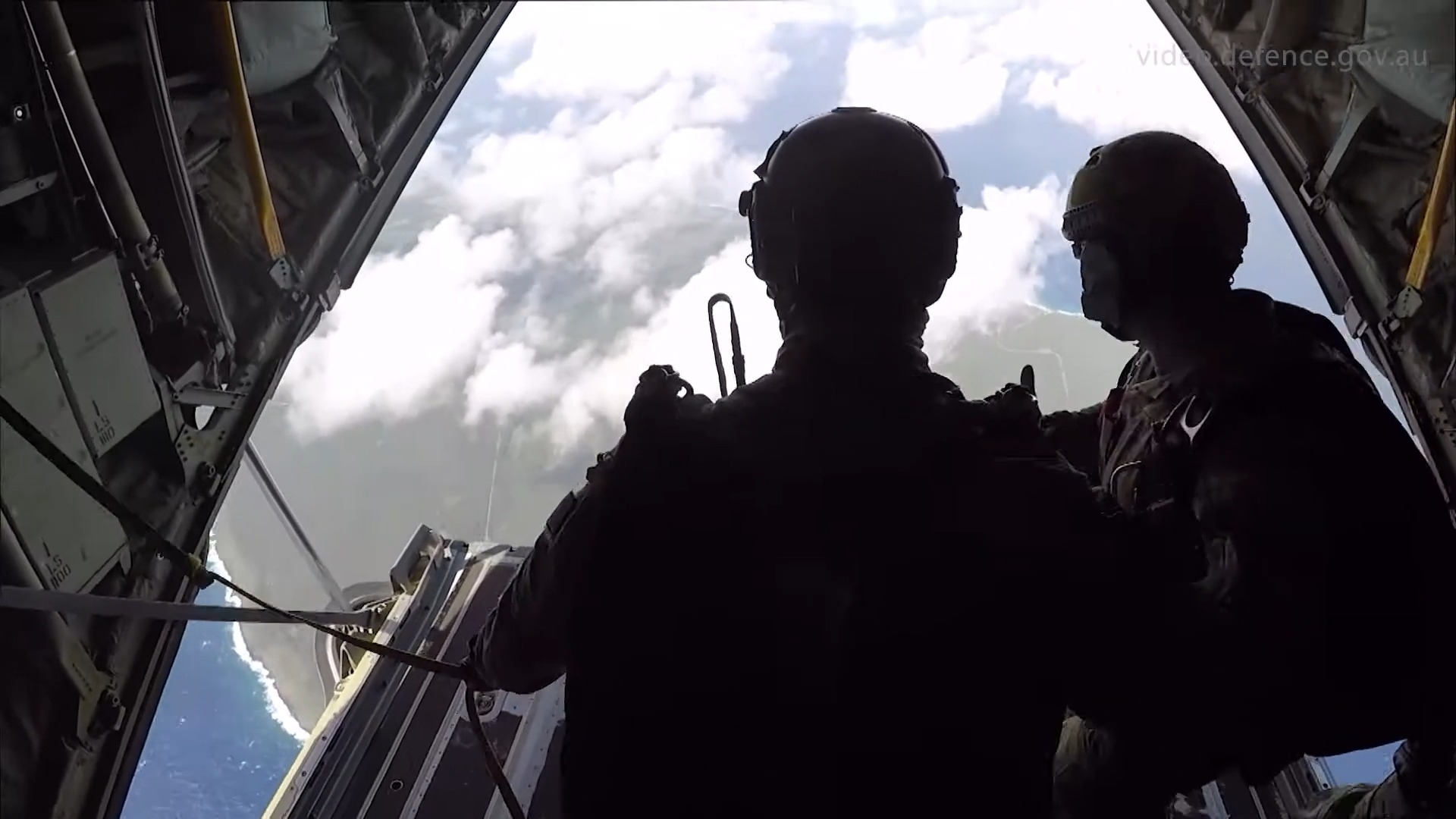
“Once the CRS arrives, my team will provide a detailed back brief and hand over before returning to Guam.”
During the scenario, the Ground Defence Officer was approached by a number of concerned “civilians” but they were able to defuse the situation and calm the local community members.
They must be prepared for any type of scenario to reflect the complexity of real HADR events.
Officer In Charge, Squadron Leader S, said Cope North provided an important simulated training environment for the CCT to practise their specialised skills.
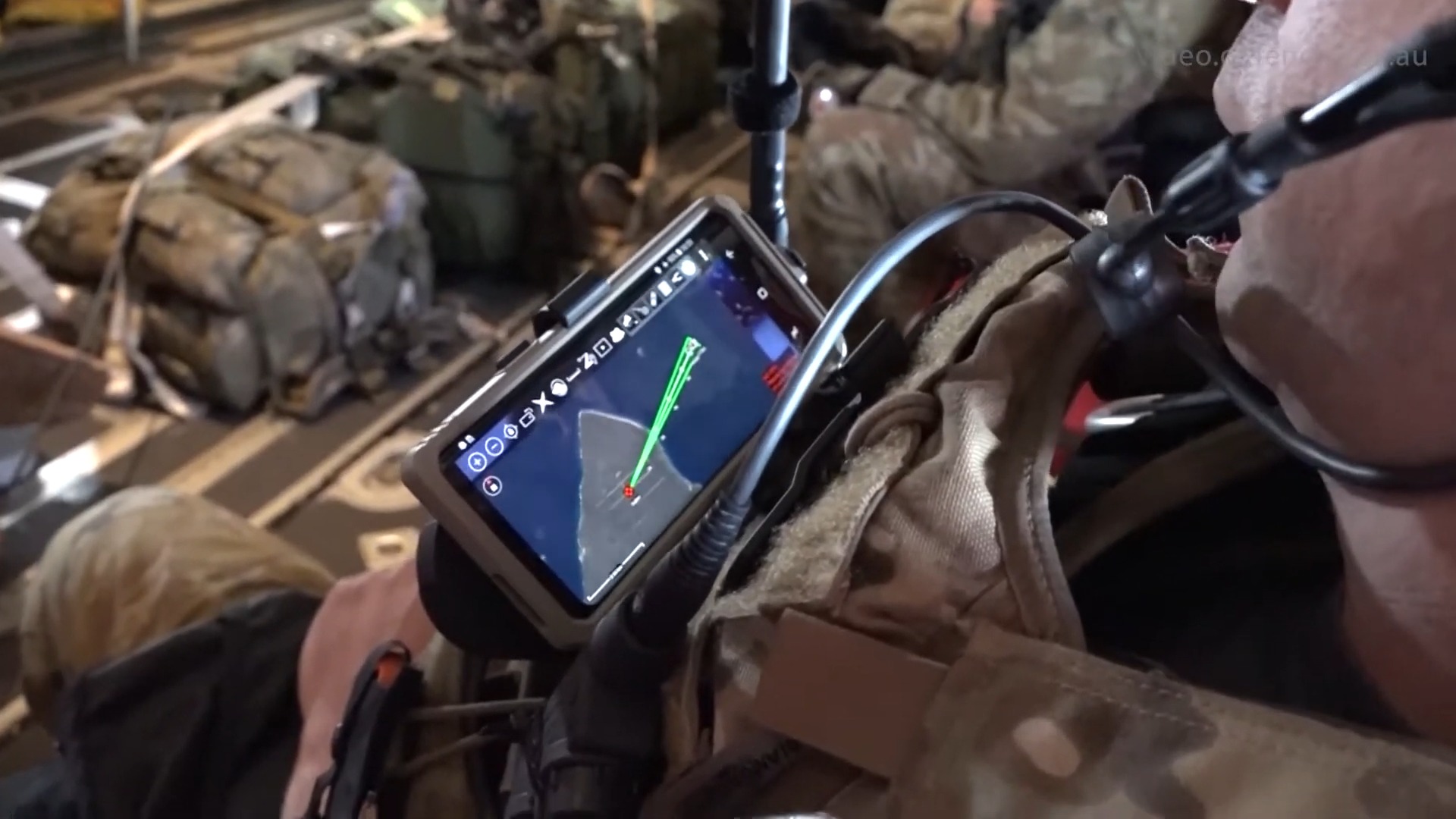
“We always enjoy closely integrating with the USAF, it provides the opportunity to integrate SOPs with our international partners,” Squadron Leader S said.
“Combat Controllers provide a range of capabilities, including forward air control of offensive air support, landing zone reconnaissance, aviation meteorology observation and airspace management.
“In this scenario, the team fulfilled the crucial role of assessing the airfield and feeding local intelligence back to the MNTF HQ to help inform key decisions for HADR operations.
Exercises such as Cope North are a great opportunity for the Royal Australian Air Force to practise how it integrates with our important regional partners – the United States and Japan.
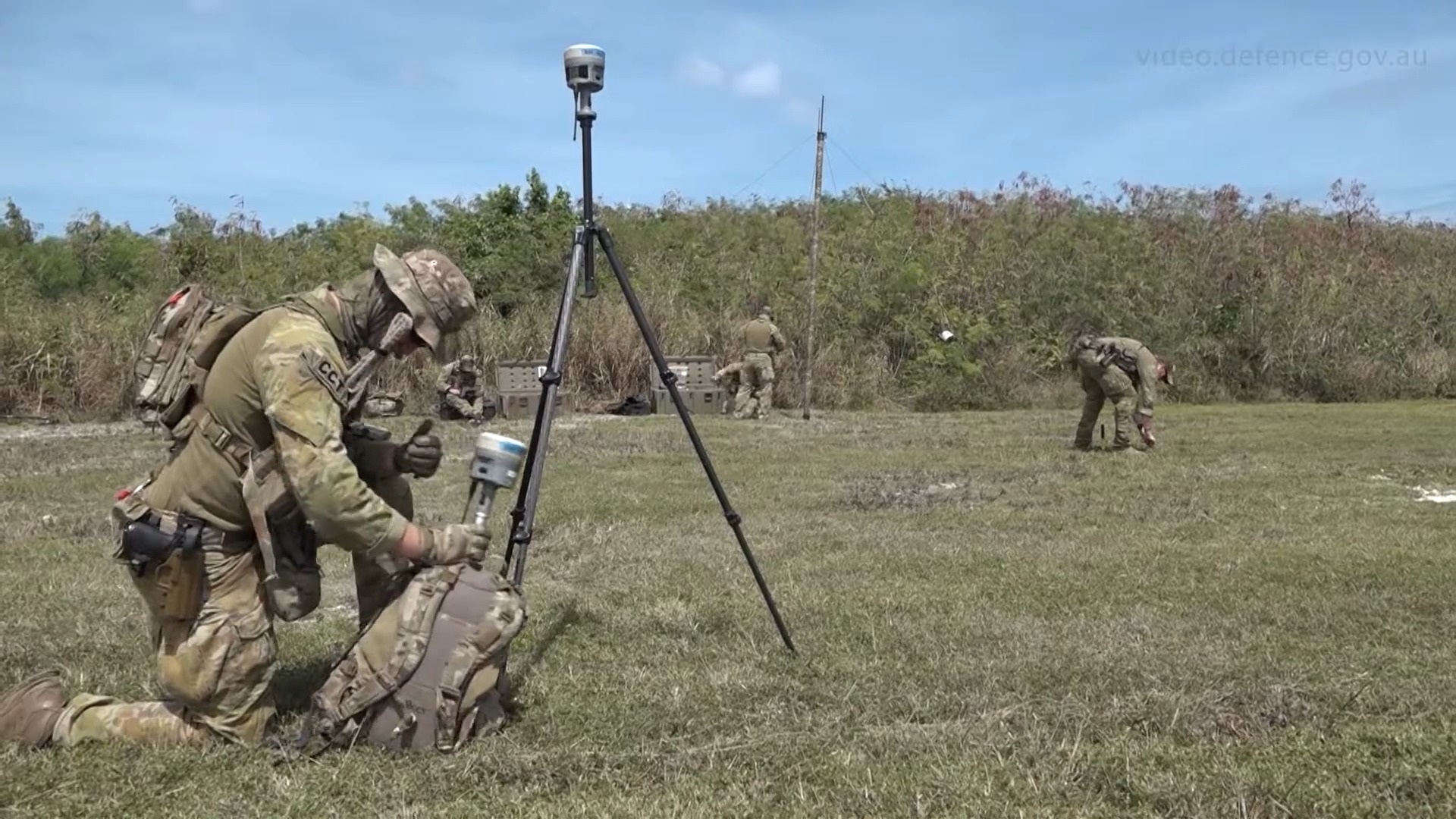
“Should a real disaster occur, we are ready to work together to help the local communities almost immediately.”
The Cope North 20 Humanitarian Assistance and Disaster Relief phase will focus on the establishment of an airhead, from which medical support can be established and humanitarian aid can be distributed.
The relationships built and sustained with multinational partners in the Indo-Pacific region through exercises, civil military operations and military exchanges help tremendously in humanitarian efforts and in preserving peace and stability in the region.


